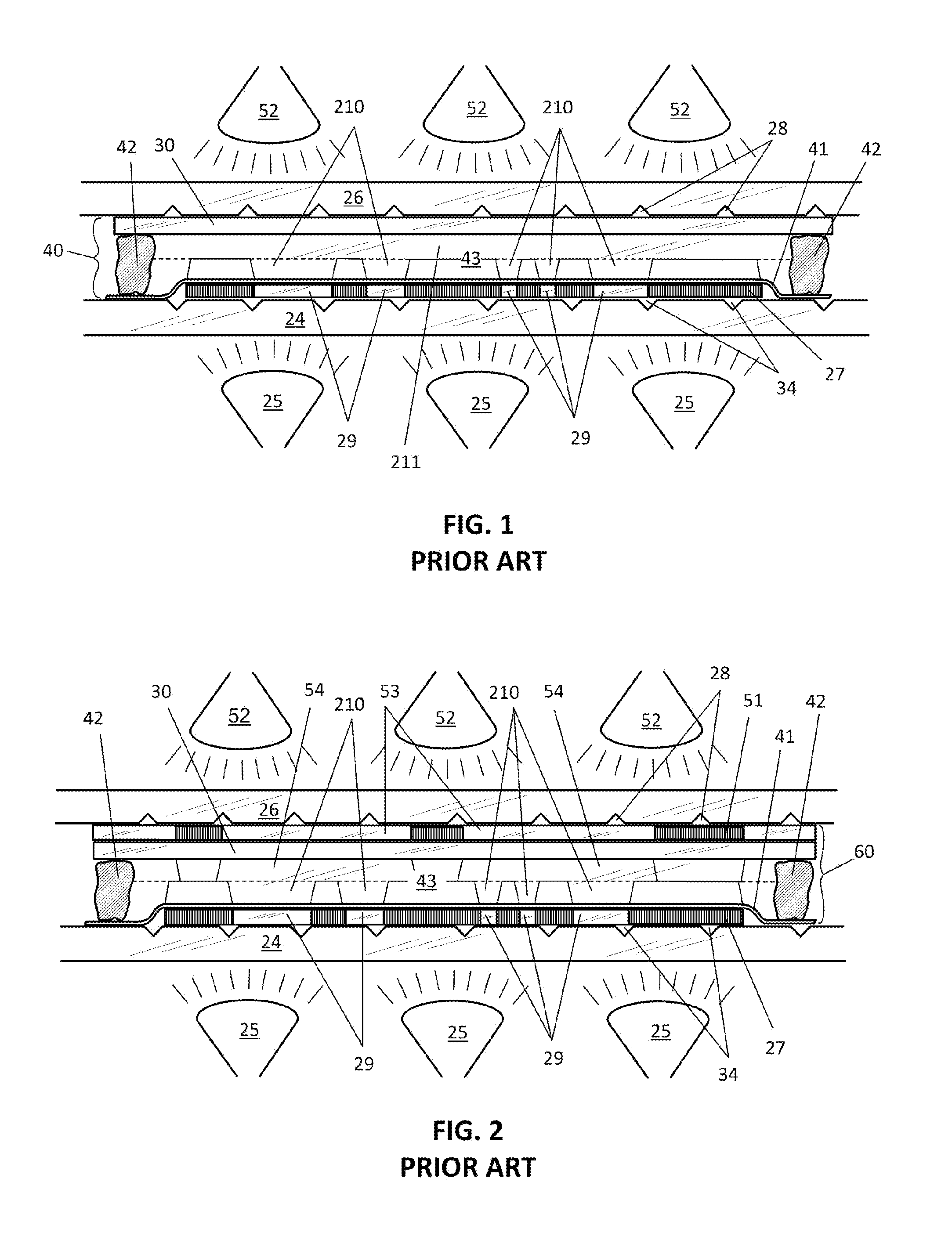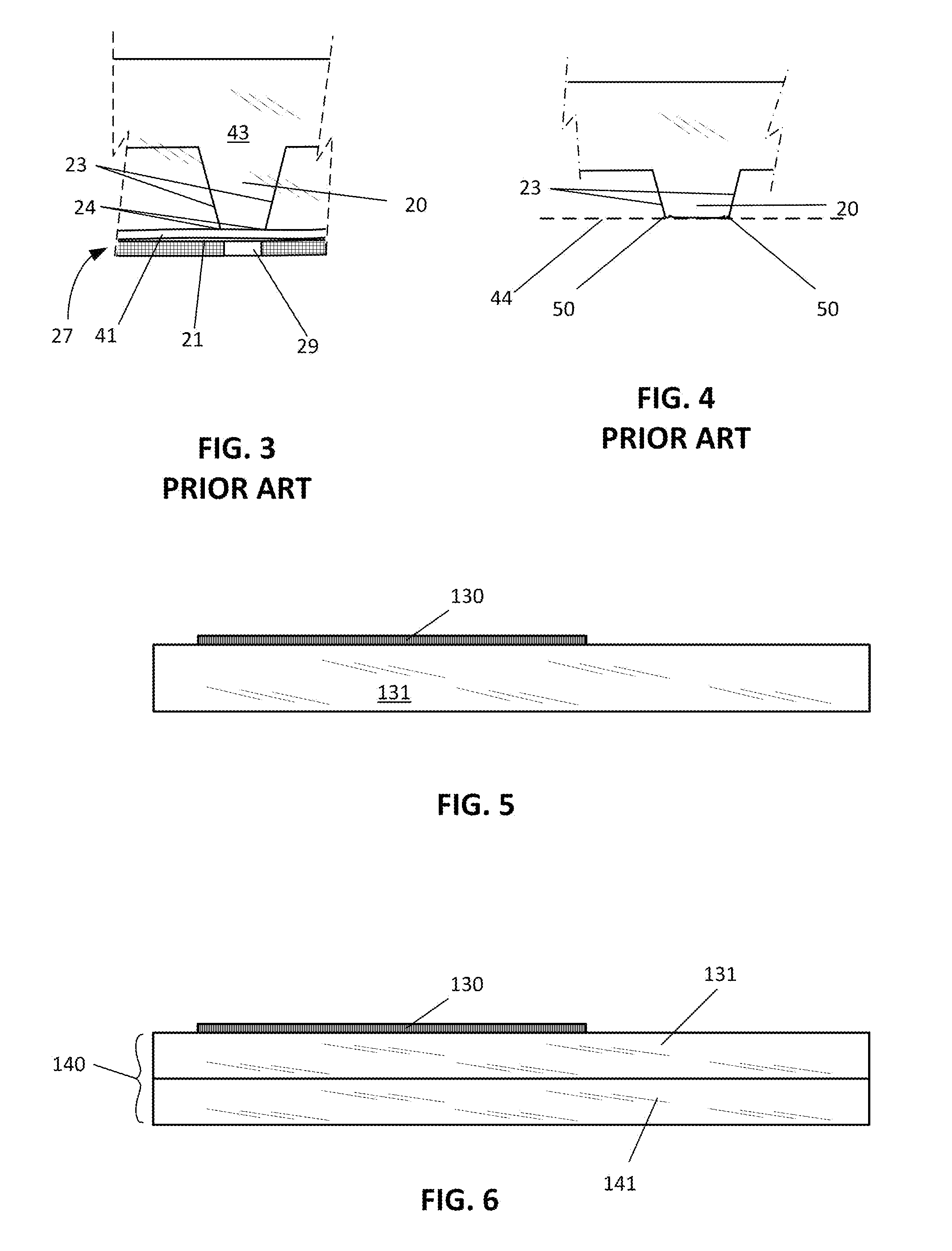Photopolymer imaging from solvent ink film images
a technology of solvent ink and film image, applied in the field of printing, can solve the problems of not being able to create images for flexo plate making from solvent-based inks that were sufficiently opaque to ultraviolet radiation, and achieve the effects of reducing the number of steps required and the level of expertise necessary, eliminating the need for expensive, and eliminating the layer of material
- Summary
- Abstract
- Description
- Claims
- Application Information
AI Technical Summary
Benefits of technology
Problems solved by technology
Method used
Image
Examples
first embodiment
[0056]FIG. 5 is a cross-sectional illustration of the present invention, namely a solvent ink negative image 130 printed on an image sheet 131 made entirely of solvent ink receptive material. The solvent inks made in accordance with U.S. patent application Ser. No. 13 / 902,301 are satisfactorily printed on cover film material comprising polyvinyl-based polymers, particularly polyvinylethylene. This embodiment may be used on the bottom glass of a UV exposure unit in place of a relief image negative covered by a protective cover film, with or without the Jetsetter Genesys™ backing laminate described further below. Using this embodiment, the entire relief image negative 27 of the prior art is eliminated, along with the air-containing interface 21 between the negative and the cover film 41 of the prior art (see FIG. 3). The scope of this invention includes, by way of example and not limitation, mixtures or copolymers containing both polyvinyls and polyethylenes, which would be both solve...
third embodiment
[0059]Alternatively, as the present invention (not drawn) the layer of adhesive-releasing material may be a backing laminate consisting of a flexographic plate backing sheet made from a solvent ink compatible polymer, with a tie-coat applied to the bottom surface. This would allow a solvent ink image to be printed directly onto the backing sheet to be used in the manner of the backing sheet taught and claimed in the aforementioned U.S. patent application Ser. No. 12 / 895,561.
fourth embodiment
[0060]FIG. 7 is a cross-sectional illustration of the present invention. It is a backing laminate called the Jetsetter Genesys™ backing laminate 150, ready for solvent-based ink printing. The unprinted two-layer image sheet 140 of FIG. 6 has been placed against the adhesive coating 91 on a polyester backing sheet 31. A solvent-based image can now be printed on the solvent ink receptive layer 131.
[0061]FIG. 8 is a cross-sectional illustration of the method for using the Jetsetter Genesys™ backing laminate of the fourth embodiment together with a relief negative of the first embodiment in making a flexographic I-plate in accordance with the present invention. Steps for preparing an I-plate from liquid photopolymer starting with these two laminates are as follows:
[0062](a) Print the digital representation of the island image 81 on the solvent ink receptive side of the Jetsetter Genesys™ backing laminate 150 (see FIG. 7) using a suitable inkjet printer;
[0063](b) Print the digital repres...
PUM
| Property | Measurement | Unit |
|---|---|---|
| flexible | aaaaa | aaaaa |
| depth | aaaaa | aaaaa |
| vacuum | aaaaa | aaaaa |
Abstract
Description
Claims
Application Information
 Login to View More
Login to View More - R&D
- Intellectual Property
- Life Sciences
- Materials
- Tech Scout
- Unparalleled Data Quality
- Higher Quality Content
- 60% Fewer Hallucinations
Browse by: Latest US Patents, China's latest patents, Technical Efficacy Thesaurus, Application Domain, Technology Topic, Popular Technical Reports.
© 2025 PatSnap. All rights reserved.Legal|Privacy policy|Modern Slavery Act Transparency Statement|Sitemap|About US| Contact US: help@patsnap.com



